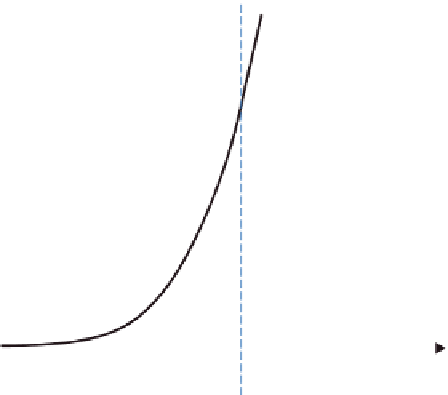Biomedical Engineering Reference
In-Depth Information
G
eq
f
≈
0.01 Hz
G
'
G
“
η
New
=
G
′′
/
ω
time
t
g
Newtonian regime
Gel time
“Equilibrium” modulus
Determination of the gel point and of critical exponents for kinetic gelation processes. Adapted
from Djabourov et al.(
1988
) with permission of EDP Sciences.
Figure 3.7
lim
ω!
0
G
00
ω
New
¼
below the gel point
;
ð
3
:
27
Þ
and the equilibrium shear modulus G
eq
is given by:
lim
ω!
0
G
0
ðωÞ
G
eq
¼
beyond the gel point
:
ð
3
:
28
Þ
In the near vicinity of the gel point, the experimental determination of these limits is
incompatible with kinetics, since this does not allow the use of very low frequencies,
on the order of 10
-
3
Hz. This limitation is seen schematically in
Figure 3.7
.Itis
generally suggested that any experiment be carried out at the lowest accessible
frequency, the data analysis carried out in the reaction time domain to minimize
errors, and the intersection G
0
= G
00
be used as a guide to identify the approximate
location of the gel time. The determination of critical exponents can be carried out
once the parameter p is identi
ed and its time dependence measured independently.
The gel point then appears by a
fitting procedure, assuming, for instance, a power-law
dependence of viscosity or elasticity versus the distance to the gel point (i.e. p/p
c
−
1).
An approximate gel point can be located by this procedure, although this is an intrinsi-
cally weak approach, as pointed out by Lusignan et al.(
1995
) and by others much
earlier (Gordon and Torkington,
1981
).
Figure 3.7
illustrates that, in the close vicinity of the gel point and for any
finite
frequency, the equilibrium modulus is smaller than G
0
(
ω
), while the static viscosity is
larger that G
00
(
ω
)/
ω
.












Search WWH ::

Custom Search